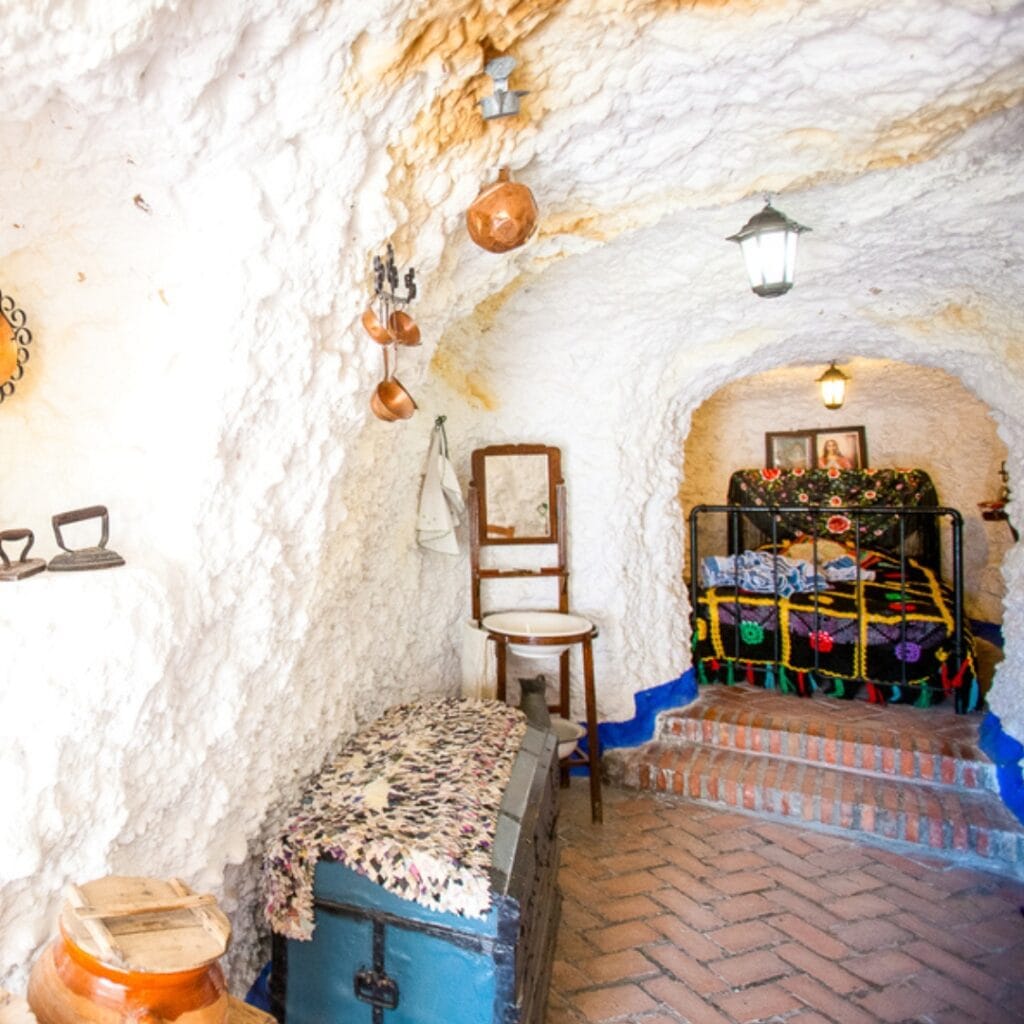Granada is an Andalusian city that exudes flamenco through its streets of Sacromonte.
In this emblematic neighborhood of the city, are the well-known Sacromonte flamenco caves, famous practically internationally. Much of the tourism that visits the city, in addition to visiting the Alhambra, usually enters the streets of Sacromonte and sees in its caves an authentic flamenco show.
These caves not only offer unique flamenco shows in a unique environment, but also help to keep the history of Gypsy culture alive and are an ideal meeting point for all people in the world who seek to enjoy this unique cultural expression.
The Origin of the Flamenco Caves of Granada
Sacromonte is a neighborhood that is located in Granada, specifically on the Valparaíso hill, opposite the Albaicín and very close to the Darro riverbed.
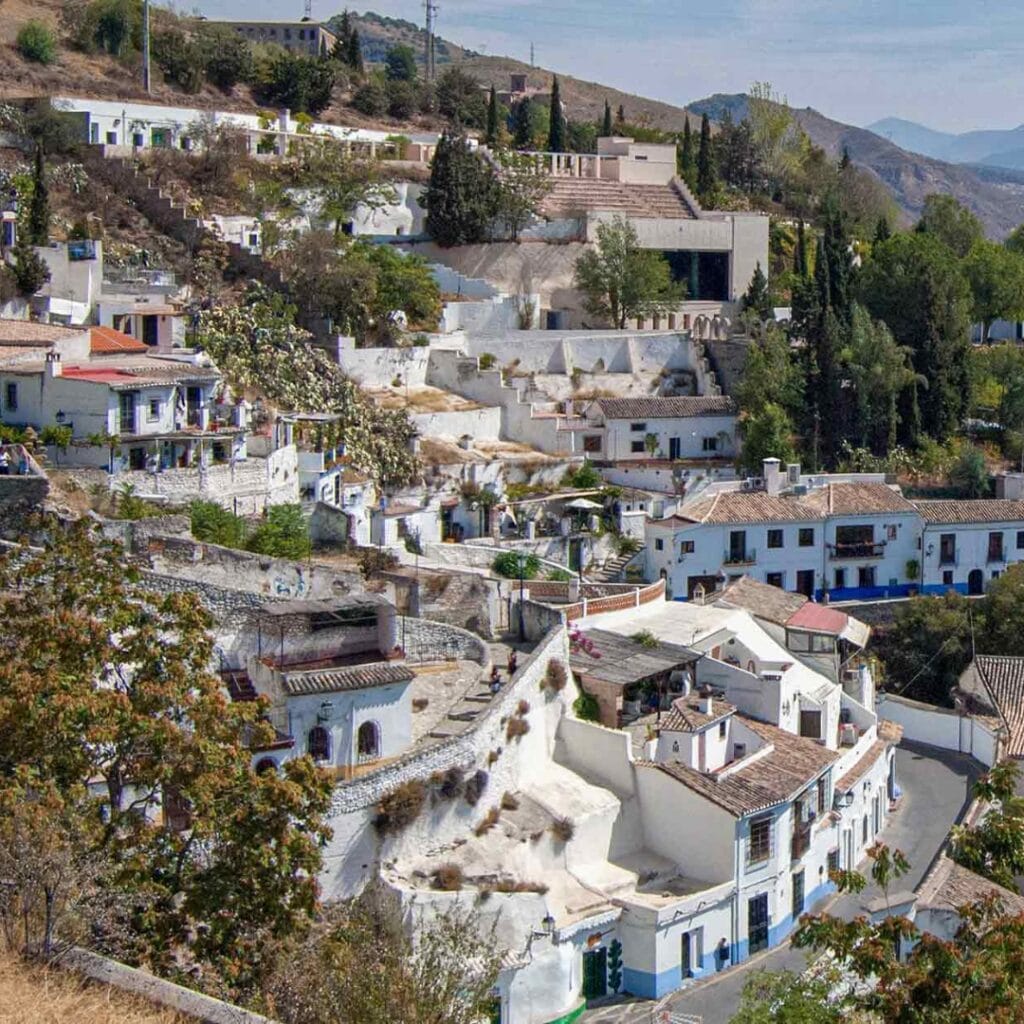
To know its relationship with flamenco, we have to go back to the era of Al-Ándalus, when the area was a peripheral territory of the urban nucleus of Granada.
At this time, the caves were already used as natural shelters in the mountains, used as warehouses or temporary shelters.
However, the true transformation of Sacromonte begins in the late fifteenth century, when the Jews were expelled in 1492 and later the Muslims in 1502.
Then, a series of religious persecutions began that forced many people to leave the city center and go to live in more marginal areas. To this exodus, were added the gypsies, who arrived to the Peninsula from Eastern Europe and India.
These displaced settlements, made the slopes of Sacromonte an ideal place to form their homes since in addition to being quite hidden, they were a refuge that offered them protection in addition to having good thermal insulation, so the temperature in them was cool in summer and warm in winter.
The Caves: more than Houses, Spaces of Culture
The caves of Sacromonte in addition to serving as housing for these gypsy peoples, also became the perfect setting for the mixture of diverse cultures and the birth of new forms of artistic expressions.
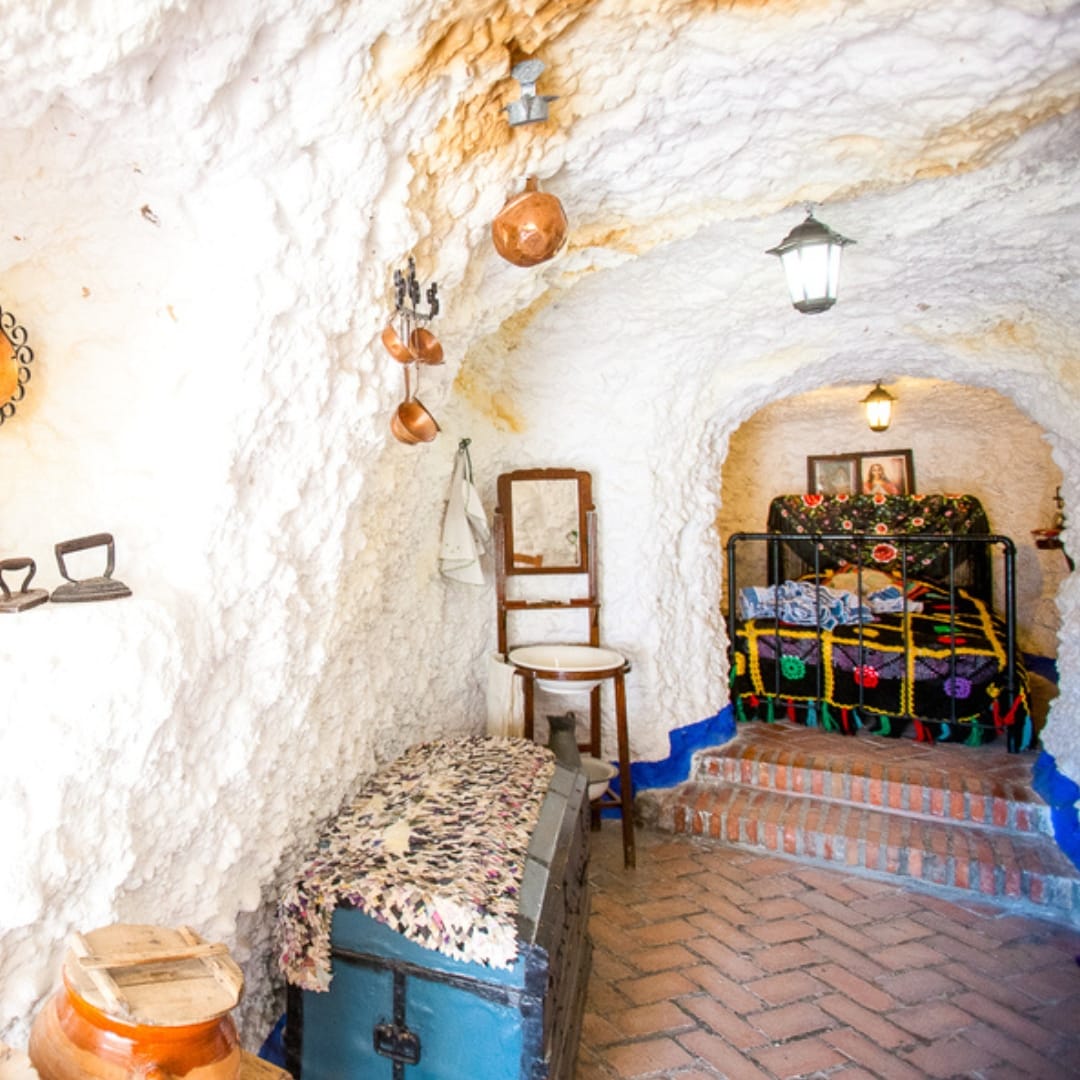
In these caves the art of Andalusians, Jews, Christians and Gypsies was mixed.
Each cave was planned in a similar way, they had an entrance in the shape of an arch, a common area that would be what we know today as a “living room” and the rooms that served as bedrooms excavated in the rock.
Many of these homes are still preserved and still inhabited, while others have been transformed into museums, flamenco tablaos or cultural spaces.
Flamenco and Gypsy Culture: Essence of Sacromonte
Over the years, the gypsies left a cultural footprint in Sacromonte. Their peculiar style of living life, music and celebrations merged with the environment of the neighborhood. The roots of unique flamenco were established: more intimate, emotional and visceral.
The well-known “zambras” of Sacromonte, are the gypsy version of the parties that the Moors made at their weddings, so they are an icon of the cultural fusion of families. They are not only shows designed to attract tourist visits, they are a way to transmit and keep their culture alive.
In addition to flamenco, Gypsy culture is also transmitted in other aspects, such as traditional foods, in the colorful flamenco fashion, even in city festivities such as Día de la Cruz or the romería de San Cecilio, patron saint of the neighborhood.
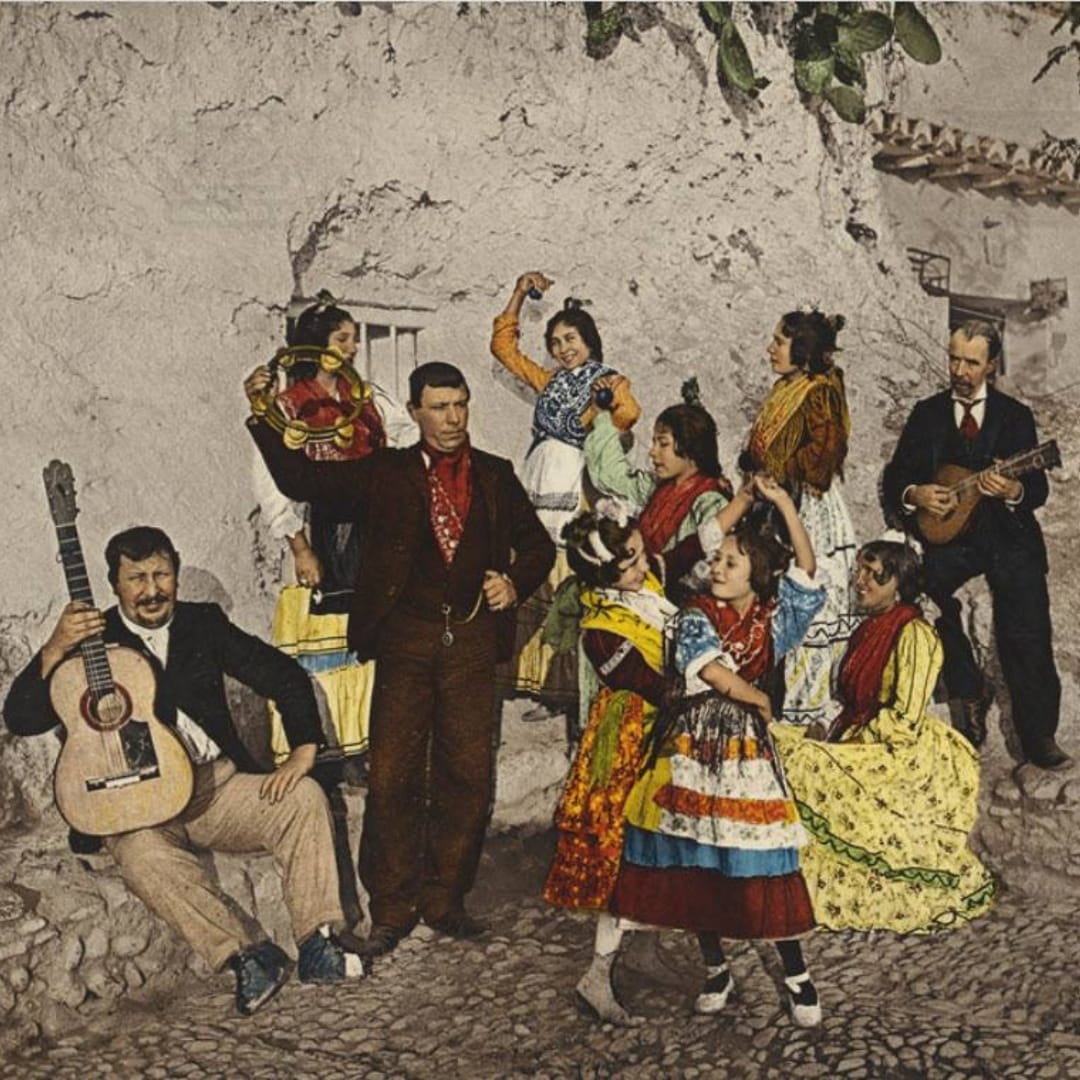
Evolution of the Neighborhood: between Marginalization and Recognition
For much of its history, Sacromonte has been singled out as a neighborhood for marginal social classes.
Life in the caves was quite hard, and most did not have basic services.
It was throughout the twentieth century, when this marginal area began to acquire greater visibility gaining visibility as it began to attract visits from people who liked that peculiar way of dancing and singing that the gypsy people have, flamenco.
The rise of tourism in Granada in the decades of the 60s and 70s brought with it a renewed interest in Sacromonte and its traditions. Flamenco tablaos, guided tours and ethnographic museums began to emerge, attracting visitors from all over the world.
Today, the neighborhood faces the challenge of balancing tourist development with the conservation of its essence. The risk of gentrification and the loss of cultural identity are constant challenges for the families who still reside in the caves.
Keep the Essence of the Neighborhood Alive
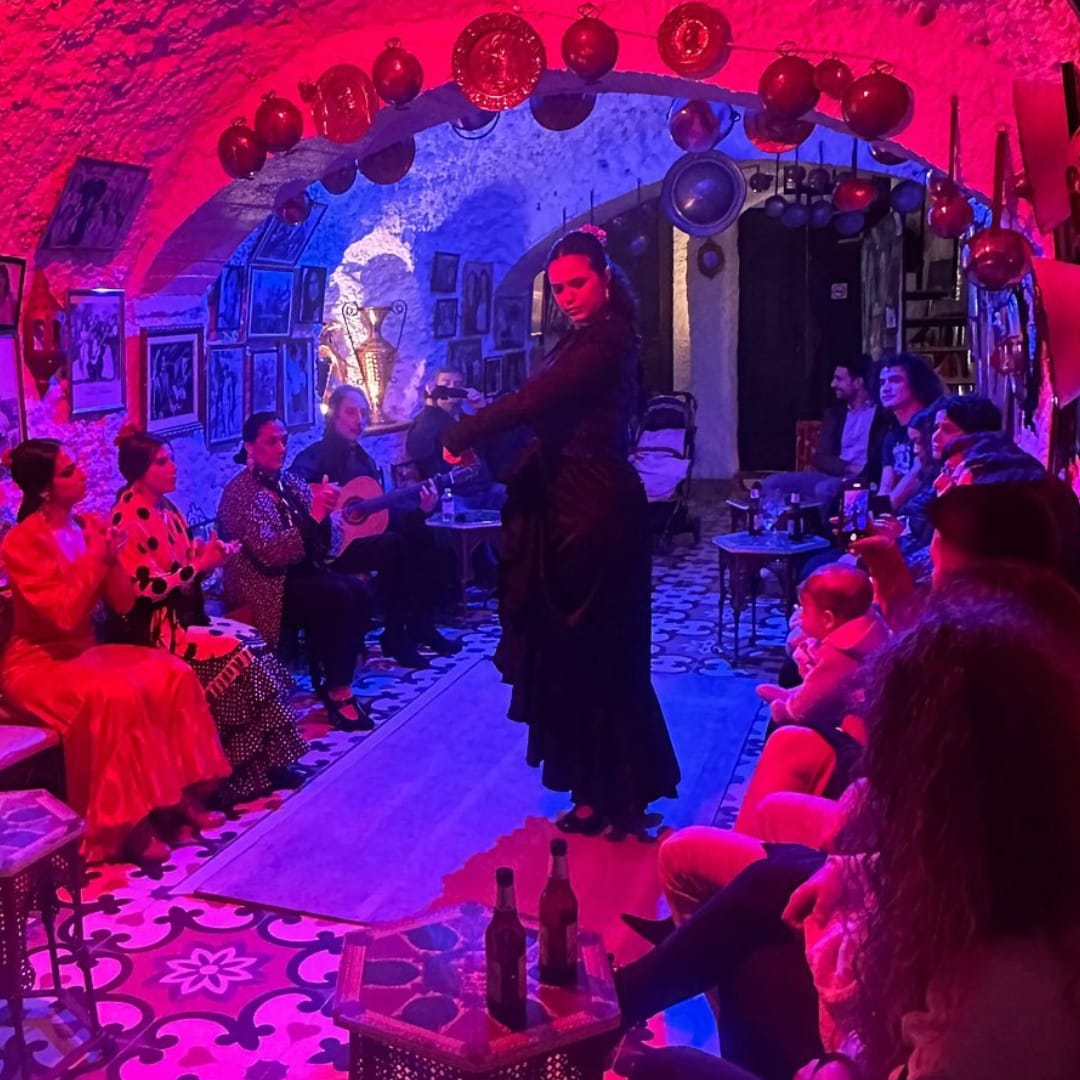
Preserving the Sacromonte, is also preserving to protect the history and identity of this people.
Investment was made in improving the infrastructure of the area, protecting this natural enclave, supporting the artists and neighbors who keep the traditions alive.
In this way, not only is the history of a resilient people kept alive, the ancestral art of flamenco, and a neighborhood that is the icon par excellence of a unique cultural coexistence between marginal peoples.

